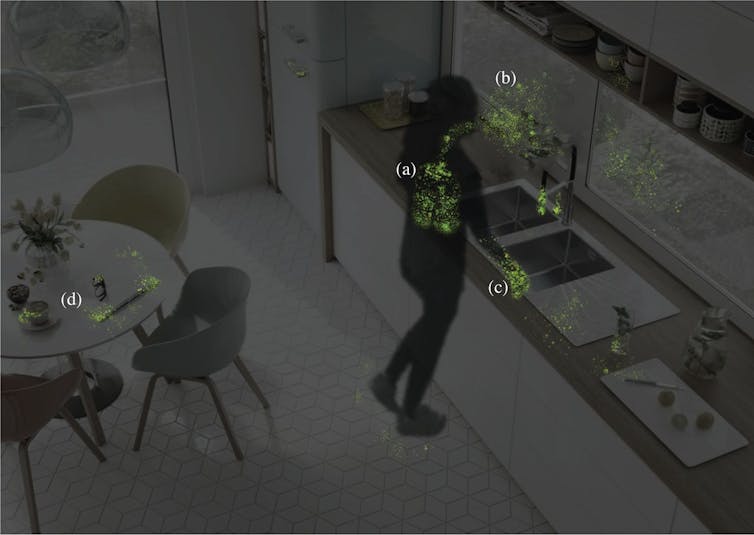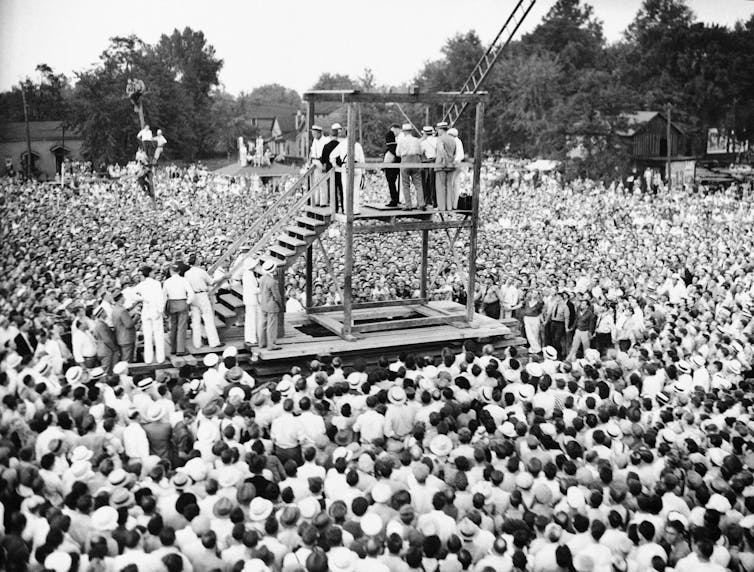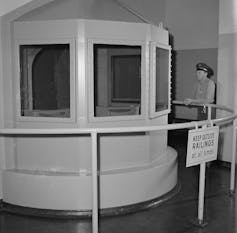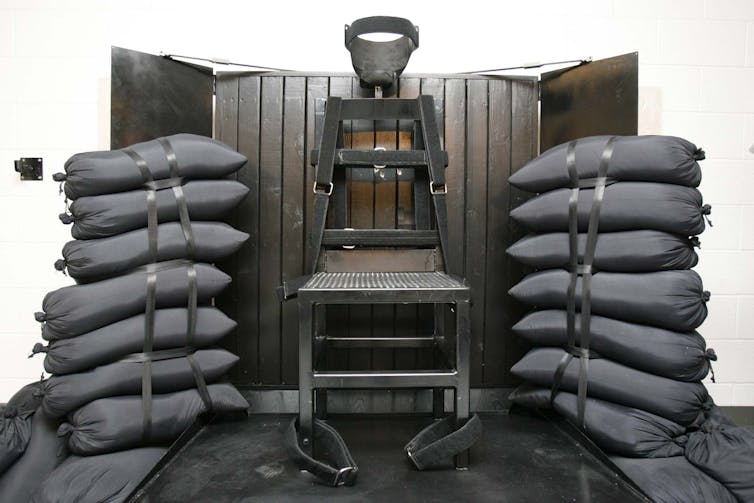Buildings have their own microbiomes – we’re striving to make them healthy places
Architects and building engineers strive to create safe, productive places where humans can live and work. We have developed complex codes, regulations and guidelines to achieve goals such as structural safety, fire safety, adequate ventilation and energy efficiency, and to anticipate extreme scenarios such as 100-year floods. The question for our profession now is whether and how the 100-year viral pandemic will change architectural design and building operations.
How can societies safeguard buildings or homes from a viral pathogen during an epidemic? What would it take to redesign public and institutional buildings so they could help “flatten the curve,” instead of simply evacuating occupants? What if people could shape and modify the microbial communities present inside buildings to minimize exposure to harmful pathogens?
At the University of Oregon’s Biology and the Built Environment (BioBE) Center, we study interactions between humans, buildings and microorganisms. We believe that architecture needs to adapt and evolve in ways that help people manage indoor microbiomes to support health. In a new paper, we combine research on how microbes function indoors with knowledge about the novel coronavirus to outline ways of minimizing COVID-19 transmission in buildings.
Cultivating or murdering microbes
Even in good times, and certainly during pandemics, the main thing people typically want to know about microbes is how to kill them. But in fact, the vast majority of microbes help humans more than they hurt us. The idea that microbes around us play an important role in our lives is known as the Old Friends Hypothesis or the Hygiene Hypothesis.
Each of us has our own microbiome – a collection of bacteria, fungi, viruses and protozoa that inhabit our skin and body, and may be as unique as our fingerprints. Some of these microbes help keep us healthy, while others may cause us to become ill.
These organisms help regulate our digestion and impact our mood and our weight. Skin microbes can have immunoprotective effects.
There are also surprisingly complex microbial ecosystems within indoor spaces. Removing all microbial life from these settings can create problems. For example, irritable bowel disease, asthma and some mood disorders have been linked to overall decreases in our microbial exposure. Lack of exposure during childhood is thought to spark overreactive immune function later in life, potentially leading to increased inflammation and contributing to these afflictions.
Focusing solely on murdering microbes can have unintended consequences. For example, our lab recently discovered a correlation between concentrations of antimicrobial compounds and abundance of antibiotic-resistant bacteria indoors. This finding has led our team to reexamine indoor cleaning practices more broadly.
Architects can use many design features to shape and modify microbial communities within homes and office buildings. They include space configuration and occupant density; interior material selection; window location, size and glass type; electric lighting spectrum and intensity; and air movement and ventilation strategies.
Building managers also play a role. They can adjust the amount of outside air that is admitted and the frequency at which it is exchanged with indoor air. Other levers include humidification and dehumidification, and of course, cleaning products and practices.
Our recent research suggests that many natural systems, such as daylight and natural ventilation, don’t just reduce energy consumption and support human health – they also support more diverse indoor microbial ecosystems and reduce the abundance of potential pathogens. Similarly, natural unfinished wood surfaces have been shown to reduce the abundance of some viruses more quickly than other common indoor surfaces, such as stainless steel or plastic.
Humidification is an important influence in indoor settings. Most indoor environments are very dry in the heating season. Dampness can produce mold, but very dry air is also a problem. It dehydrates our mucus membranes and skin and carries particles deeper into our respiratory tract, leaving us more susceptible to infection.

How the novel coronavirus might spread indoors: (a) Viral particles accumulate in an infected person’s lungs and upper respiratory tract. (b) Droplets and aerosolized viral particles are expelled from the body through activities such as coughing, sneezing and talking, and can spread to nearby surroundings and individuals. (c and d) Viral particles, excreted from the mouth and nose, are often found on the hands (c) and can be spread to commonly touched items (d) such as computers, glasses, faucets and countertops. Dietz et al., 2020, http://dx.doi.org/10.1128/mSystems.00245-20, CC BY-SA
Dry air also decreases particle deposition, allowing ultra-fine particles to remain aerosolized longer. This increases the risk of airborne transmission of microbes.
Indoor air with a relative humidity of 40%-60% avoids these harmful impacts. It has also been shown to decrease viral infectivity, likely by disrupting viruses’ outer membrane
Based upon our past research, we have developed some basic guidelines for enhanced building operations during the COVID-19 pandemic. They aim to reduce the risk of indoor viral transmission in settings including homes, medical buildings and other critical infrastructure.
These strategies can be applied in nearly every building. Examples include introducing more outside air, increasing air exchange, maintaining relative humidity of 40%-60%, opening windows to provide natural ventilation and flush out indoor spaces, increasing access to daylight, and implementing targeted disinfection techniques, such as UV-C light in health care settings.
People can use similar strategies to reduce risks at home. If someone in the house has been infected or is symptomatic, we recommend having them self-isolate in a space next to a bathroom with an exhaust fan that can operate continuously. This will pull air from the rest of the home through the infected space and out the bathroom exhaust.
Letting in sunlight and fresh air and maintaining healthy humidity levels can help create a healthy indoor environment at home during the COVID-19 pandemic.
Better living through microbiology
Our team’s next goal is to define what makes up a community of beneficial microbes. We are partnering with industry, institutions and government organizations to develop real-time indoor microbial monitoring technologies that can support better operating practices and improve contact tracing strategies. With this knowledge, we can monitor for pathogens and use data science to improve our understanding of healthy indoor microbiomes.
How might people cultivate an indoor community of benign and favorable microbes? Several cleaning product manufacturers are already exploring the idea of adding specific microbes to indoor environments to outcompete or attack harmful microbes and curate others. These products avert many traditional cleaners’ “scorched Earth” approach, which relies on caustic and volatile ingredients.
We believe this concept is worth exploring but should be based on robust research with effective oversight. The key agency in this area is the Environmental Protection Agency, which regulates antimicrobial products designed as pesticides, including cleaning products.
For several decades, the architectural design and construction industry has been developing standards to guide building performance, including aspects related to human health. In our view, it is time to focus on shaping healthy indoor microbiomes so that they can shape us.
Authors
 Kevin Van den Wymelenberg
Kevin Van den Wymelenberg
Associate Professor of Architecture and Director, Biology and the Built Environment Center, University of Oregon
Associate Professor of Architecture and Director, Biology and the Built Environment Center, University of Oregon
Kevin Van Den Wymelenberg receives funding from The Alfred P Sloan Foundation, US Department of Agriculture, US Department of Energy, The Northwest Energy Efficiency Alliance, and several industry members participating in the Institute for Health in the Built Environment Industry Research Consortium
 Leslie Dietz
Leslie Dietz
Wet Lab Manager, University of Oregon
Wet Lab Manager, University of Oregon
Leslie Dietz receives funding from the Alfred P. Sloan Foundation and the US Department of Agriculture. Leslie Dietz is affiliated with 500WomenScientists.
Research Assistant Professor of Architecture, University of Oregon
Disclosure statement
Mark Fretz receives funding from the Alfred P. Sloan Foundation, U.S. Department of Agriculture, the Northwest Energy Efficiency Alliance and participating industry members in the Institute for Health in the Built Environment Industry Research Consortium. He consults with industry members in the Institute for Health in the Built Environment Industry Research Consortium.














